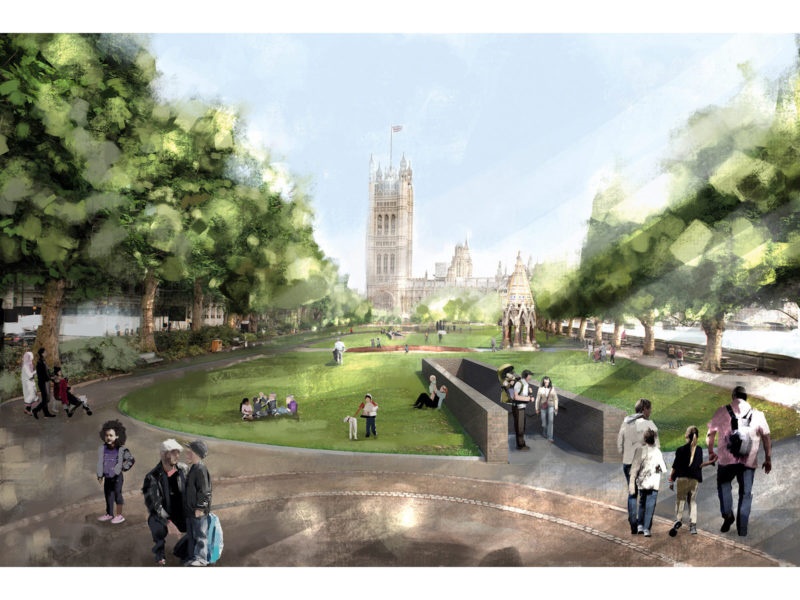Following the announcement of FuturePace as one of the ten shortlisted design teams for the new National Holocaust Memorial, last Sunday saw the presentations of the proposals for the £40 million monument. Held inside the Victoria and Albert Museum’s main lecture theatre, the ten teams including architects Foster + Partners met for a day-long series of public presentations in front of the judges.
The proposed £40 million monument for Victoria Tower Gardens next to the Houses of Parliament has been billed as a ‘national asset for remembrance and education sited at the heart of our democracy’. Backed by the UK government, the commission is one of the most eagerly awaited public projects in recent years. Once completed, the memorial and learning centre will commemorate the six million Jews murdered in the Holocaust, as well as the Roma, Sinti, homosexuals and disabled people who were also victims.
The judges, who were officially advised by Malcolm Reading of competition organiser Malcolm Reading Consultants, were introduced to a wide variety of responses, covering almost every scale, interior, exterior, orientation and programmatic approach to what could be built on the Thames-side plot. The jury was led by TV executive Peter Bazalgette, a former chair of Arts Council England, and also included UK chief rabbi Ephraim Mirvis and holocaust survivor Ben Helfgott. They were shown large metaphysical sculptures, submerged ambiguous spaces, interactive artworks and highly contextual, evocative forms.
Foster + Partners (UK) with Michal Rovner and FuturePace, Local Projects, Avner Shalev, Simon Schama, Samantha Heywood, Tillotson Design Associates, David Bonnett Associates, and Whybrow, were amongst those presenting:

IMAGE SOURCE: © FOSTER + PARTNERS AND MICHAL ROVNER & MALCOLM READING CONSULTANTS Foster + Partners (UK) with Michal Rovner and FuturePace, Local Projects, Avner Shalev, Simon Schama, Samantha Heywood, Tillotson Design Associates, David Bonnett Associates, and Whybrow
With minimum disturbance to the park, a ramp descends into the earth. Evocative of train tracks that terminated in the camps or the brown brick lined corridors leading down to the gas chambers. This is the way to the Time Left Memorial.
Projected images of an endless procession of human figures resonate with exodus or a human text that seems to go on forever like the unspoken testimonies.
The surface of the Memorial is set in the landscape, a gently arched rusted steel plate on the cross axis of Victoria Tower, Buxton Memorial and St John’s Smith Square.
The ramp entrance is marked by a sculpture of Broken Books evoking the burning of millions of books started by the Nazis in 1933 with the words of Heinrich Heine “wherever they burn books they will in the end burn human beings”. Marking the biggest break in the book of human history is also a reminder and a warning.
You can read the full coverage on Sunday’s presentations here.
